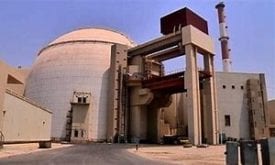nufdiran.org – As the US withdraws from Afghanistan, Iran is turning its eye to opportunities there to fill the void left by the decades of military existence of the US, as it becomes the most vulnerable in the region to the threats posed by the bordering country.
With the Taliban taking over Afghan cities and districts, violence and chaos are growing on the borders with Iran. Tehran has moved to hedge its bets and establish contacts with both warring sides in the war-torn neighbouring country to facilitate peace talks.
Last week, Iranian Foreign Minister Javad Zarif – whose government supports an all-inclusive Afghan government that includes Taliban – met the group negotiators; they issued a joint statement that confirms the group’s intentions for a negotiated settlement on the future of the country just before the Taliban captured a key border crossing between Iran and Afghanistan.
The role of Iran in making a breakthrough remains unclear as it already lost trust by supporting Taliban against US forces after the US withdrawal from the nuclear deal. But Sanam Vakil, an Adjunct Professor of Middle East Studies at the Johns Hopkins University told Al-Ahram Weekly, “Facilitating an accommodation between both parties in Afghanistan will help Iran remain a credible broker with both sides.”
Iran is one country among others like China and Russia that has direct interests motivating its influence in Afghanistan in the future especially after the US pullout. There is a lot to lose and gain for Iran in Afghanistan as Iran has a long involvement in Afghan politics by supporting various political factions and recently this activism was at its peak since the start of the Afghan peace process in 2018.
Navid Mohebbi, a policy fellow of the National Union for Democracy in Iran, told the Weekly that the meddling of Iran in Afghanistan talks to the “Iran doctrine” of being “sympathetic to groups and countries that are inconsistent with international norms and in conflict with the interests of Western countries as these groups can support each other in regional and international developments.
“Iran’s military doctrine in the Middle East is based on the creation and support of proxy groups to the extent that these groups effectively seize power in respective countries. Iran’s support for dozens of militia groups in Iraq, Hizbullah in Lebanon, Hamas and Islamic Jihad in Gaza, as well as the Houthis in Yemen, are just a few examples that align with this doctrine,” Mohebbi added.
Iran, one of the most influential regional actors in Afghanistan, has always seen Afghanistan as a threat to its security but also an opportunity to expand trade and accessibility to Afghan and Central Asian markets. Iran has other trade ambitions in Afghanistan through the first railway between Iran and Afghanistan, launched in December 2020, which aims to connect Afghanistan with the world through the Iranian port of Chabahar.
On the security level, Iran has extended security interests in Afghanistan and this was embodied in sending fighters to deter the Islamic State Khorasan Province.
Iran sees that any engagement in the Afghan peace process is an aspect of defending its backyard and that broader influence there is required. At the same time, Afghanistan represents a menace that needs to be tamed by Iran for a couple of reasons.
This is happening at a defining moment as Iran already faces discontent at home as hopes for economic relief are fading due to sanctions by the West along with the elections excluding the reformists of Iran, yielding to the victory of the hardline cleric Ebrahim Raisi.
“Afghanistan presents Iran with more of a threat than an opportunity,” said Ali Vaez, Iran Project director and senior adviser to the president at International Crisis Group.
The ongoing violence caused by the Taliban takeover of Afghan provinces is expected to produce waves of refugees that will flee to Tehran across the borders, a crisis that makes the border guards intolerant as some 50 migrants were allegedly beaten and drowned last year while crossing the bordering Harirod River.
At the same time Iran is alarmed by the Taliban control over Islam Qala, a key border post between the two countries and a gateway to the Afghan city of Herat where the Iranian consulate is located, as it saw the killing of nine Iranian diplomats there by the Taliban in late 1990s.
In addition, relations between Tehran and the Taliban are mostly marked by hostility and being at odds as the Sunni militiamen and the extremist groups sympathetic with them, regard the Shiism of Iran an apostasy.
“While Iran has developed a relationship with the Taliban in the past few years, the two sides neither trust nor like one another. While Iran prefers to see the US withdraw from its near-abroad, it does not want to see a total takeover by the Taliban,” Vaez told the Weekly.
“So in the short run, Iran will have to manage the chaos and prevent instability on its borders. Tehran will try to protect its own security interests, primarily through diplomatic mediation between Afghans and, if not, true pressure. For the latter, it might need to draw on some of the Afghan Shia militias that it deployed to Syria in 2014-2016.”
This article was originally printed in Egypt’s Al-Ahram Weekly.
 Shabtabnews In this dark night, I have lost my way – Arise from a corner, oh you the star of guidance.
Shabtabnews In this dark night, I have lost my way – Arise from a corner, oh you the star of guidance.



